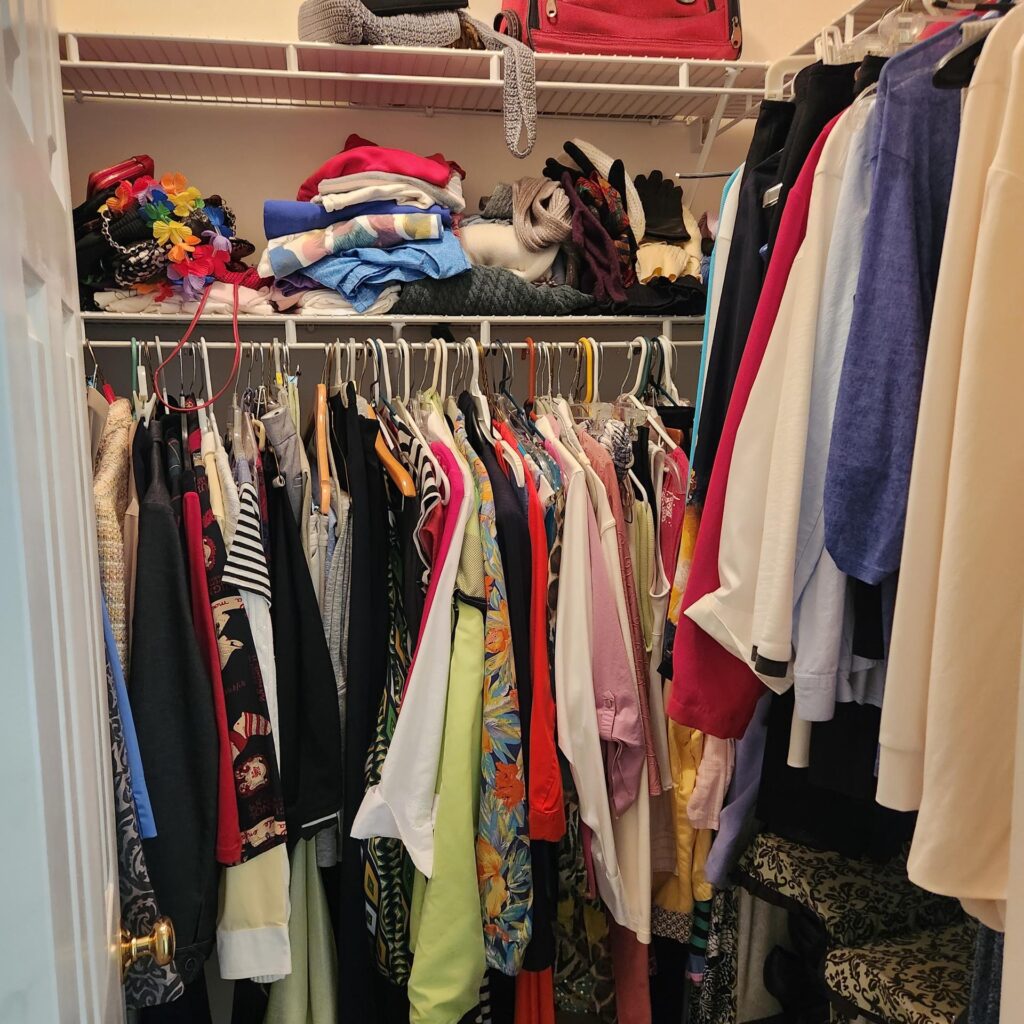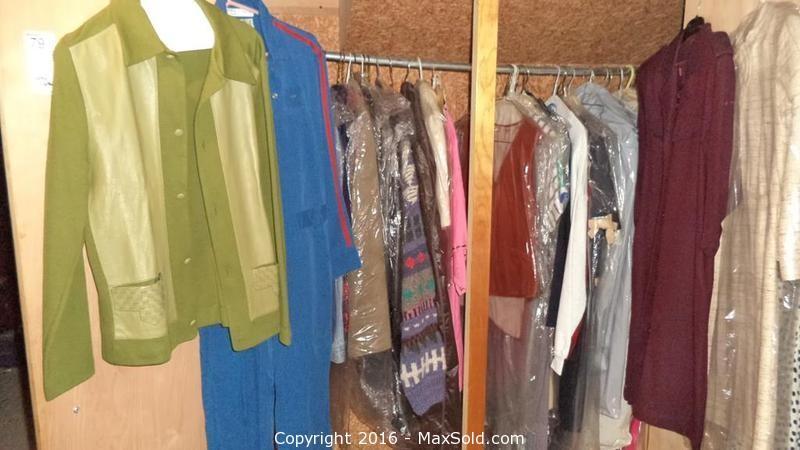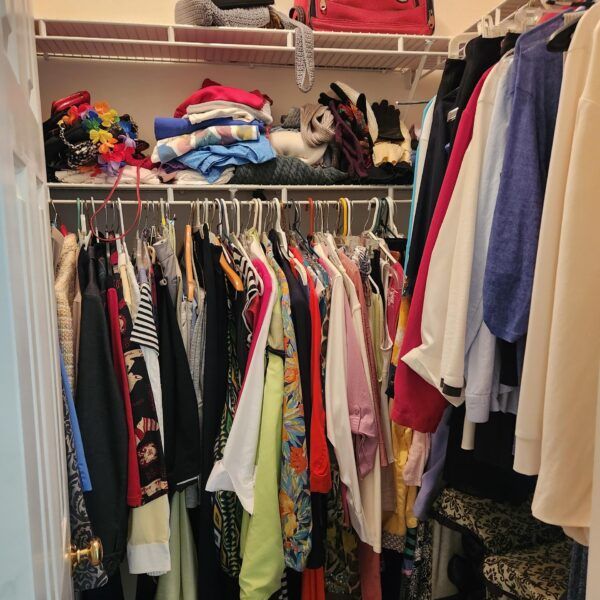#S.O.S #Surplus #Stuff #Amy #Moyer #Clothing #WorthPoint
During any clean-out project, whether it’s as small as a closet or as big as a whole house, one is inevitably confronted with clothing. What do you do with old clothing you need to get rid of, and what is worth saving or selling? Read on to learn tips and strategies for sorting all that S.O.S. (Surplus Old Stuff): Clothing.

Spring Cleaning
Ah, spring—time for spring cleaning and closet clean-outs. Whether you are tackling just your closet or dealing with several closets’ worth of clothing from a downsizing relative, it can be hard to know what to keep and what to toss. A general rule of thumb that I like to follow is if the garment has not been worn in a year or two, it is time to get rid of it.
Sure, you can make exceptions for vintage wear and sentimental pieces of clothing like wedding dresses and graduation outfits, but over time, these may become too much to keep. Indeed, you don’t need to hold on to your junior high graduation dress. Cleaning out any S.O.S. (Surplus Old Stuff): Clothing follows the five steps outlined below.
Step 1: Sort the Children’s vs. Adult Clothing
Are you cleaning out S.O.S. (Surplus Old Stuff): Clothing for adults or children? There are several things to keep in mind with kids’ clothing. While you may be able to resell relatively new children’s clothing, there is not a huge market for vintage children’s clothing. Most of the following steps apply to adult clothing.
If you mostly deal with children’s clothing from recent years, your best bet for weeding out those onesies is taking a few bags to a local children’s clothing consignment shop or posting “lots” on a local marketplace platform. If you have vintage children’s clothing, it doesn’t hurt to ask your local vintage reseller if they’d take them, but be prepared for a “nope” (see Step 2).
Step 2: Pluck the Vintage
Whether you have 19th-century Victorian chemises or 1970s flower power muumuus, the next step in any S.O.S. (Surplus Old Stuff): Clothing clean out is plucking out the vintage items. You can often find a local vintage reseller who would be happy to pop by your abode and make a cash offer on the pile of retro goodies you have to pass on. While any reseller demurs from giving away their inventory procurement secrets, I’ll let the cat out of the bag for clothing resellers: One of their secrets is that they sometimes get a phone call, text, or email from folks looking to pass on huge lots of vintage clothing from an older relative’s house clean-out.
With “thrifting” still going strong for all those kiddos in their teens and twenties, most even small to moderate-sized towns have a “vintage” store specializing in clothing. Google your local shop and see if they’ll make you a cash offer with what you’ve set aside. Don’t forget to ask if they’d take everything in “as is” condition or only want items in excellent condition. If it’s the latter, move on to Step 3.

Step 3: Check for Rips, Tears, Stains
Some vintage clothing resellers will do some mending and cleaning on their own, but if yours does not, you need to start checking for rips, tears, and stains. As a reseller myself, vintage clothing is the bane of my existence as it is very common to find a spectacular garment with some irreversible condition issue. Even if you don’t find the issue yourself, vintage clothing buyers online are notoriously finicky and quick to ask for returns.
If you have vintage clothes with condition issues that your local shop is not interested in, you can still donate these goods to a charity shop. Many charity shops will recycle old clothing they deem not good enough for their shelves. However, if you have vintage or non-vintage clothing in terrible condition, you can skip the charity shop step and head straight to the “textile recycling bin.” If you don’t know the location of your local textile recycling bin, again, Google is your friend.

Step 4: Decide What to Keep
At this point, you have culled both the vintage clothing and poor condition clothing from your S.O.S. (Surplus Old Stuff): Clothing project. Now is the time to take a second go-around with the clothing you have out to be sure you are ready to pass on everything. I always tell my clients, “You have to be sure you’re ready to get rid of it.” If you are hemming and hawing over a particular piece, remember my rule about not keeping clothing you haven’t worn for a year or two.
Like this idea, I would encourage you to get rid of any clothing you’ll never fit into again. You may have grand plans for a diet and new workout, but even if you achieve your goal of fitting into the jeans you wore when you were twenty-five, they are probably now out of style, and heck, you probably deserve a fresh pair anyway.
Step 5: Donate or Sell
For the remainder of your S.O.S. (Surplus Old Stuff): Clothing, you can choose to donate or sell these items. Now that you’ve tried the local vintage shop, it’s time to find your local consignment shop for the best pieces of clothing you’re culling. It is super easy to drop a bag off with them and (hopefully) get a check for all the sale proceeds later.
If the rest of your S.O.S. (Surplus Old Stuff): Clothing items are not good enough to consign, fill up a trash bag and toss it in your car to take to your favorite charity donation spot. Don’t forget to get a tax deduction receipt, and head back home to enjoy all the space you made from clearing out your S.O.S. (Surplus Old Stuff): Clothing!
Amy Moyer is the proprietor of Antmuffin: Art, Antiques & Collectibles. She holds a B.A. in Visual Art from Brown University and lives in Boston.
WorthPoint—Discover. Value. Preserve.




